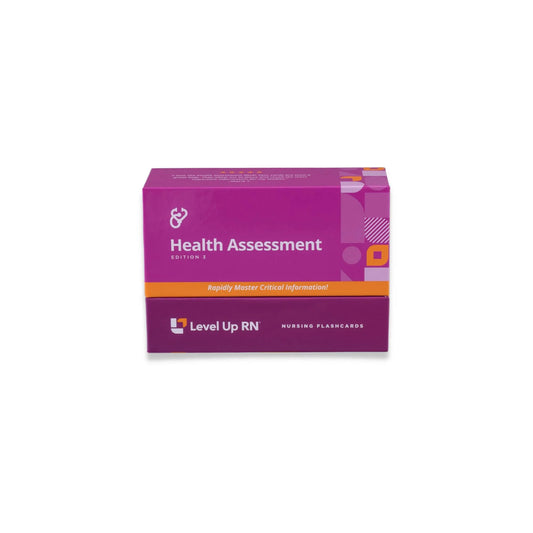Additional lung assessments, including whispered pectoriloquy and egophony.
Health Assessment, part 34: Whispered Pectoriloquy & Egophony
Full Transcript: Health Assessment, part 34: Whispered Pectoriloquy & Egophony
Full Transcript: Health Assessment, part 34: Whispered Pectoriloquy & Egophony
Hi. I'm Meris, and in this video, I'm going to be reviewing with you two additional types of lung assessments, whispered pectoriloquy and egophony. I'm going to be following along with our health assessment flashcards. These are available on our website, leveluprn.com, if you want to grab a set for yourself. Or if you prefer digital products, I would invite you to check out Flashables, the digital version of all of our flashcards. All right. Let's go ahead and get started.
Okay. So both of these assessments are ones that require the use of a stethoscope. So first up, we're going to be talking about whispered pectoriloquy. Now, as the name may suggest, this is a test where your patient is going to whisper. You're going to place your stethoscope over their lung fields and auscultate while your patient whispers words. You can provide them with whatever words you would like. Oftentimes, people will use the phrase 99, or they will ask their patient to count from 1 until 10. And you'll be moving that stethoscope from side to side, going down the lung fields, listening all the way to the bottom.
Now, the expected finding of this is that as we get farther down, as we move away from the larynx, the sound should get quieter as well. However, if you are listening, and you are moving that stethoscope down, and you can hear those whispered words very clearly, especially down there at those lower lobes, this may suggest that your patient has some sort of consolidation in their lungs, which could be indicative of a problem such as pneumonia.
All right. Now let's talk about egophony. So egophony, you can remember the E for E, because what we're going to do here is similarly we're moving that stethoscope back and forth across these different lung fields. But we are going to instruct our patient to say, "E," the whole time. We're going to have them just say, "E." The expected finding is that as I auscultate, I hear E. I hear it exactly as my patient is saying it. However, it is unexpected finding if as I am listening, that E starts to sound more like A, right? If I'm saying E, it should sound like E when you listen over my lung fields. But if you are listening, and it sounds like A, instead, that, again, may be indicative of some sort of consolidation such as pneumonia or even pleural effusion.
So just quickly, I want to help you understand why this is. The sound moves through whatever structures are in its way, whether that is air or whether that is a solid structure or a fluid-filled structure. The quality of those sound waves, of those vibrations and frequencies, changes based on whether that sound is traveling through air, solid space, or a fluid-filled space. The expected findings for both of these are based on the idea that the sound is being transmitted by the air in the lungs. However, if I have consolidation or pleural effusion where I've got liquid in or around the lungs instead, the quality of that transmitted sound wave is going to be different. I hope that helps you to understand why that sound quality is going to change when we have a problem like pneumonia or pleural effusion.
That's it for this video, but I'm so glad you stayed until the end because I'm going to test your knowledge of some key facts I provided in this video. When assessing whispered pectoriloquy, the nurse can clearly hear the patient's whispered words. What could this finding indicate? Consolidation in the lungs, such as pneumonia. What is the expected finding for egophony? An E sound heard over the lung fields.
All right. That is it for this video. Let me know how many questions you got right from that quiz. I want to hear it. And if you have a great way that you remember content in this video, would you please leave me a comment? I want to hear, and I know that other learners could benefit from that as well. All right. I'll see you in the next one. Thanks so much, and happy studying.


